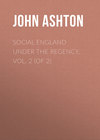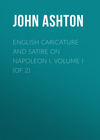Kitabı oku: «The Devil in Britain and America», sayfa 14
CHAPTER XX
Elizabeth Horner – Pardons for Witchcraft – A Witch taken in London – Sarah Mordike – An Impostor convicted – Case of Jane Wenham – The Last Witch hanged in England
Hutchinson gives an account of a very curious case of witchcraft in 1696:
‘Elizabeth Horner was tried before the Lord Chief Justice Holt at Exeter. Three Children of William Bovet were thought to have been bewitched by her, whereof one was dead. It was deposed that another had her Legs twisted, and yet from her Hands and Knees, she would spring five Foot high. The children vomited Pins, and were bitten (if the Depositions were true) and pricked, and pinched, the Marks appearing. The Children said Bess Horner’s Head would come off from her Body, and go into their Bellies. The Mother of the Children deposed, that one of them walked up a smooth plaistered Wall, till her Feet were nine Foot high, her Head standing off from it. This, she said, she did five or six times, and laughed and said, Bess Horner held her up. This poor Woman had something like a Nipple on her Shoulder, which the Children said was sucked by a Toad. Many other odd things were deposed, but the Jury brought her in Not Guilty and no Inconvenience hath followed from her Acquittal.’
She was lucky, not only inasmuch as the belief in witchcraft was on the wane, as also to have been tried by so enlightened a judge as Sir John Holt, of whom the story is told (of which, however, I can find no authentication) that a witch was once brought before him, and a charm, written on parchment, was adduced against her. This charm, which consisted of a line or two of Greek verse, Sir John recognised as having been written by himself in his student days at Oxford to cure a poor woman’s daughter of the ague.
But although the majority of so-called witches were executed after trial and sentence, all were not, for we find in the Calendars of State Papers several instances of pardons:
1597. 30 Ap. Pardon for Elizabeth Melton, late of Collingham, co. York, condemned for witchcraft.
1597. 3 May. Pardon to Alice Brerely of Castleton, co. Lanc., spinster, condemned for killing Jas. Kirshaw and Rob. Scolefield by witchcraft.
1604. 16 Ap. Grant to Christian, wife of Thomas Weech, co. Norfolk, of pardon for witchcraft.
She was one of the extremely fortunate, for she was again accused of this crime.
1610. 3 Ap. Grant to Christian Weech of pardon for the murder of Mary Freeston by witchcraft.
1608. 15 Feb. Grant to Simon Reade of pardon for conjuration and invocation of unclean spirits.
1611. 7 May. Grant of pardon to Wm. Bate, indicted twenty years since, for practising invocation of spirits for finding treasure, the evidence being found weak, etc.
With the beginning of the eighteenth century, the belief in witchcraft was dying out rapidly, and very few are the cases narrated. I give the following from a broadsheet; but to my mind it has not the true ring of former cases, and I doubt its authenticity; still, I give it as amongst the few reported cases in this century.
‘A FULL AND TRUE RELATION OF THE DISCOVERING, APPREHENDING, AND TAKING OF A NOTORIOUS WITCH, WHO WAS CARRIED BEFORE JUSTICE BATEMAN IN WELL-CLOSE, ON SUNDAY JULY THE 23RD, TOGETHER WITH HER EXAMINATION AND COMMITMENT TO BRIDEWELL, CLERKENWELL.’
‘Sarah Griffith who Lived in a Garret in Rosemary lane, was a long time suspected for a bad Woman, but nothing could be prov’d against her, that the Law might take hold of her: Tho’ some of the Neighbors Children would be strangely affected with unknown Distempers, as Vomiting of Pins, there Bodies turn’d into strang Postures, and such like; many were frighted with strange Apperitions of Cats, which, of a sudden, would vanish away; these, and such like, made those who lived in the Neighbourhood, both suspicious and fearful of her: Till, at last, the Devil (who always betrays those that deal with him) thus brought the Truth to Light. One, Mr. John – at the Sugarloaf, had a good jolly fellow for his Apprentice: This Old Jade came into his shop to buy a quartern of Sope. The Young fellow happened to Laugh; and the Scales not hanging right, cryed out he thought that they were be-Witched; The Old Woman hearing him say so, fell into a great Passion, judging he said so to ridicule her, ran out of the Shop, and threatened revenge. In the Night was heard a lumbring noise in the Shop, and the Man, coming down to see, found a strang confusion; every thing turn’d topsy turvy; all the goods out of order. But, what was worse, the next day, the poor fellow was troubled with a strange Disease, but [by] the good prayers of some Neighboring Divines, the power of the Devil was restrain’d.
‘Two or three days after, it happened that the Young Man, with two or three more, walking up to the New River Head, who should they see, but Mother Griffith walking that way. They consulted together to try her; and one of them said, Let us toss her into the River, for I have heard, that if she Swims, ’tis a certain sign of a Witch. In short, they put their design in execution; for, coming up to her, they tossed her in; but, like a Bladder when forc’d under Water, pops up again, so this Witch was no sooner in, but Swam like a Corke; they kept her in some time, and, at last, let her come out again. She was no sooner out, but she smote that Young man on the Arm, and told him he should pay dear for what he had done. Immediately, he found a strange pain in his Arm, and, looking on it, found the exact mark of her hand and Fingers as black as a Cole. He went home, where he lay much tormented, and wonderfully affrighted with the Old Woman coming to afflict him; and, at last, died with the pain, and [was] Buried in St. Pulchres Church Yard.
‘Mr. John – fearing some further mischief, takes a Constable, and goes to her Lodging, where he finds the Old Woman, and charges the Constable with her. She made many attempts to escape, but the Devil, who owed her a shame, had now left her, and she was apprehended. As she was conducted towards the Justice’s house, she tried to leap over the Wall, and had done it, had not the Constable knocked her down. In this manner she was carried before the Justice. There was Evidence that was With him in his Sickness could Witness that he had unaccountable Fits, Vomitted up Old Nails, Pins and such like, his body being turned into strange postures, and, all the while, nothing but crying out of Mother Griffith, that she was come to torment him. His Arm rotted almost off, Gangreen’d, and kill’d him. When she came before the Justice, she pleaded innocence, but the circumstances appeared so plainly, that she was committed to Bridewell, where she now remains.
‘24 July, 1704.’
If we needed any evidence to show the decadence of witchcraft, it can be found in the case of Sarah Mordike, who was (luckily for her) tried by Lord Chief Justice Holt in 1701. Hutchinson gives the best report of this case that I can find.
‘Richard Hathaway, Apprentice to Thomas Wellyn, a Blacksmith in Southwark, had either real Convulsions, or counterfeit Fits; at the time when he was bound first to his Master. When he had served about three Years, he was thought to be so ill, that he was put into the Hospital, and was judged to be a very miserable Spectacle, lying in strange Fits, and going double; and, after seven Weeks was turned out as incurable.
‘In September 1690 (?1700) he said he was bewitched, and vomited great Numbers of Pins, and seemed to be dumb and blind, and was thought to live without Meat for ten Weeks together, tho’ he was put with Keepers into an empty House a great part of the Time, and had a bed bought on purpose, and was watched Day and Night by Persons that were Strangers to him. One of his Watchers deposed, That a Lump of Hair, loose Pins, a Stump of a Nail, half a Nutshel, and two or three pieces of Stone came from him. A second Witness confirmed this, and added, That he stood over him at the Time, with a drawn Sword in his Hand. His Face would be drawn on one side, He foamed at the Mouth, and crooked Pins were found in the Foam. His Head was bent to the Reins of his Back, and he went, sometimes, almost upon his Ankles. He would lie as if he was dead; and, once, was brought to himself by Cupping Glasses. Screeking and other Noises were heard in the Bed, and about the House, and Charms were applied to him, and were said to do him good. It was also deposed, That he barked like a Dog, and in his Fits burnt like a Flame of Fire.
‘The Person that he accused of the Witchcraft was one Sarah Morduck, of the same Parish. He intimated by Signs, that, if he might scratch her, he should be well. He did scratch her, and then he eat and drank, and had his Sight, and was well for six Weeks together.
‘After that, he seemed to be ill again, and signified that she had bewitched him again, and he must scratch her again. Upon this, the said Sarah Morduck was assaulted in her own House, and grievously abused; her Hair and Face torn; she, was kicked, thrown to the Ground, stamped on, and threatened to be put into a Horse-Pond, to be tried by Swimming, and very hardly escaped with her Life. In hopes to avoid these Dangers, she removed out of Southwark, and lodged in London; but, still, she was not suffered to be in safety, but was followed in the Streets, and often thought herself in danger of being pulled in Pieces.
‘About Easter, 1701, she was carried before Sir Thomas Lane, and was stript and searched by his Order, and Hathaway scratched her before him, and then he eat and drank, and was thought to be well. Sir Thomas committed her, and Hathaway continued free from his Fits. Near the Time of Tryal, the Prayers of several Churches were desired, and Money was gathered for him: between six and seven Pounds at one Collection; and other Sums at other Times, to bear his Charges to the Assizes.
‘In the latter end of July, at Guildford Assizes, this Sarah Morduck was tried before the Right Honourable, the Lord Chief Justice Holt, and was acquitted, and Richard, himself, was committed as a Cheat and Impostor: But both Judge, and Jury, and Witnesses were slandered, as if they had not done fairly.
‘For several Days after his Commitment to the Marshalsea, he eat, and drank, and slept: but, some time after, he was again as if under the Power of Witchcraft, dumb and fasting.
‘That it might be certain whether he did really live without Meat or not, my Lord Chief Justice put him into the House of Mr. Kensy, a Surgeon, in November following, that he might make Tryal of him.
‘March 25, 1702, this Hathaway was tried before Lord Chief Justice Holt, and Mr. Baron Hatfell, in Southwark, the Place in which the Fact was best known, and where any witnesses might appear without Charge.
‘On Hathaway’s side, these things were sworn that I have mentioned already.
‘To convict him of Imposture, it was deposed, That on purpose for an Experiment, Dr. Martin, Minister of the Parish, had contrived that he scratch’d another Woman, when he thought he had scratch’d this Sarah Morduck; and upon that, he opened his Eyes; but, being told he had scratch’d the wrong Woman, he pretended to be blind and dumb again. And the manner of his doing it was such, as showed him a crafty fellow, taking care of himself; for he felt her Arm four times over, before he would scratch her.
‘To prove that his vomiting Pins was by a Trick, it was deposed, That immediately after he had vomited great Numbers in appearance upon the Ground, and was going to vomit more, Care being taken that he should vomit into a Basin, and his Hands being kept down below it, there was not a Pin in the Basin, but a great many crooked ones in his Pockets, in readiness to have play’d his Tricks with.
‘Some of the Noises that were said to be made in the Bed, were shewed to be made by his own Feet scratching the Bed Post.
‘Besides what he got by Gifts and Collections, it was proved that he had tried to make a Gain, by printing a Narrative of his own Case.
‘With respect to his Fasting, it was said by one of his own Witnesses, that there came from him five Times more than he took. After two Days fasting, and refusing to take any thing from Mr. Kensy, for fear he should really starve himself, rather than own his knavery, Mr. Kensy contrived to let him have Meat in a private Way, by this Device. He pretended to fall out with his Maid in Hathaway’s hearing, and said she gave him Meat; and therefor he gave her Warning to be gone. She carried on the Design, and told him she was as ready to be gone as he was to have her go; and, after this feigned Quarrell, she spake kindly to Richard, and bad him take nothing from her Master; for, while she stay’d she would take Care of him. After this, he took Meat from her; but a Child being in the Room, he pointed that it might not see him. He eat and drank any Thing she gave him, Ale, Brandy, Fish, Pudding, Mutton, &c. Once he was drunk, and spew’d, and covered his Vomit with Ashes; But if either Mr. Kensy, or anyone else offered him any, he refused to take it; and, when he had eaten heartily, he would shew them his Belly clung up to his Back, as though there had been nothing in it. The Maid saw this openly, Mr. Kensy saw it through a private Hole; and, once, he had four Neighbours with him, that saw it as well as he. He eat in this manner for eleven Days together, and yet pretended to continue his Fast. If they asked him how many Weeks he had fasted before he came to Mr. Kensy’s House? he counted Ten upon his Fingers. If they asked him how many Weeks he had fasted since his coming thither? he counted Two, tho’ they had seen him eat eleven Days of the two Weeks.
‘When they had Proof enough, Mr. Kensy told him he was discover’d, and said his Friends were in Custody, and had confess’d the whole Matter. Upon that he cried passionately and said he would tell the Lord Chief Justice the whole Truth, and asked, If his Mother was safe? But, my Lord not being at his Chamber, he, in about an Hour after, recanted, and said again that he was bewitched.
‘These Things were deposed at large by many and substantial Witnesses; insomuch that the Jury, without going from the Bar, returned him Guilty.
‘Some Months after, my Lord Chief Justice Holt past Sentence upon him, That he should suffer Imprisonment a Year, and stand in the Pillory three Times.’
The last case of witchcraft in England, where a so-called witch was tried and condemned by judge and jury (although she was not executed), was that of Jane Wenham in 1712. I am aware that another and later case is cited in 1716 of one Mrs. Hicks and her daughter, said to have been executed at Huntingdon, for ‘selling their souls to the devil, making their neighbours vomit pins, and raising a storm by which a certain ship was almost lost’; but as no one yet has been able to find any record of this case, I beg leave to doubt its existence.
But Jane Wenham’s was a cause célèbre. She lived at Walkern, a village in Hertfordshire, about four miles from Stevenage. The account of the proceedings at her trial is very long, so that I shall only give two or three of the informations laid against her:
‘Matthew Gilston, of the Parish of Walkerne, says upon Oath, that, on New Years Day last past, he carrying Straw upon a Fork from Mr. Gardiner’s Barn, met Jane Wenham, who asked him for some Straw, which he refused to give her; then she said she would take some, and accordingly took some away from this Informant.
‘And farther, this Informant saith, that on the 29th of Jan. last, when this Informant was threshing in the Barn of his Master, John Chapman, an Old Woman in a Riding-hood, or Cloak, he knows not which, came to the Barn Door, and asked him for a Penyworth of Straw; he told her he could give her none, and she went away, Muttering.
‘And this Informant saith, that after the Woman was gone, he was not able to work, but ran out of the Barn, as far as a place called Munders-Hill, (which is about Three Miles from Walkerne) and asked at a House there for a Penyworth of Straw, and they, refusing to give him any, he went farther, to some Dung-heaps, and took some Straw from thence, and pull’d off his Shirt, and brought it Home in his Shirt; he knows not what mov’d him to this, but says he was forc’d to it, he knows not how.
‘Susan Aylott, the Wife of William Aylott, of the Parish of Walkerne, saith upon Oath, that about 12 Years ago last Christmas, she, this Informant, was sent for to the Wife of Richard Harvey, lying very Ill in a strange Condition; and, as soon as she came thither, Jane Wenham followed her, and she, this Informant, wonder’d that Jane Wenham followed her, since Richard Harvey’s Wife had told her that she, the said Jane Wenham had bewitched her: Then Jane Wenham went under the Window where the sick Woman lay, and said, Why do they let this Creature lye there? Why don’t they take her and hang her out of the way? At which she, this Informant, had some Words with Jane Wenham, saying, Take you, and hang you out of the Way: and then Jane Wenham answer’d, Hold you your Tongue, I don’t meddle with you, and that Night, the sick Woman, aforesaid, died.
‘And this Informant farther saith, That, soon after, Jane Wenham came to this Informant’s House, and look’d upon a Child which was in her Lap, and stroaked it; and said, Susan, you have a curious Child; you and I had some Words, but I hope we are Friends; and asked this Informant to lend her a Glass to carry some Vinegar in from the Shop; then this Informant sent Jane Wenham a Glass, who went away. And this Informant was afraid of her Child, remembering she was thought to have bewitched Richard Harvey’s Wife.
‘This Informant further saith, That on Sunday following, she was at her brother Jeremy Harvey’s House, with her Child, and that her Child was taken in a grievous Condition, stark Distracted, and so died on the Thursday following; and this Informant saith, she thinks Jane Wenham bewitched her Child; and saith also, that Jane Wenham has had the Reputation of a Witch for several Years before.
‘Thomas Adams, Junior, of Walkerne, maketh Oath, that about Three Weeks, or a month before Christmas last, he met Jane Wenham in his Turnip Field, with a few of his Turnips, which she was carrying away; and upon his Threatning her, she threw them down; he, this Informant, told her she might keep them, for she should pay dear for them; then she was very submissive, and begg’d Pardon, saying, she had no Victuals all that day, and had no money to buy any; afterwards, they parted, and he saw her not after; But, on Christmas-Day Morning, One of his best Sheep died without any Signs of Illness found upon the Body after it was open’d, and Nine or Ten Days after, died another Sheep, in an unaccountable Manner; and, shortly after, Two more Sheep died also, some of them having no Marks of Disease upon ’em, but being sound in all their Parts, as his Shepherd informs him. He also saith that his Shepherd tells him that one other Sheep was taken strangely, skipping and standing upon its Head, but in half an Hour was well, and continues so; and another Sheep was likewise Ill, Two or Three Days, but it is now well again: And Jane Wenham having the Common Fame of a Witch, he does believe that if they were bewitch’d, she did bewitch them.’
All these charges convinced the jury that she was indeed a witch, and the judge had no option but to sentence her; but he got her a reprieve, and she was let out of prison, when she was kindly befriended by Colonel Plummer, of Gilston, who gave her a cottage in which she harmlessly lived the remainder of her days.
But although this was the last capital conviction in England, the belief in witchcraft was far from dead; nay, it is still living in some remote districts, but cannot long exist, as education makes its way.
CHAPTER XXI
Scotch Witches – Bessie Dunlop – Alesoun Peirson – Dr. John Fian – The Devil a Preacher – Examination of Agnes Sampson – Confession of Issobel Gowdie
But Scotland was the real home of the witch. Comparatively speaking, the English hardly knew what a witch was, and the reports of trials are so numerous that space prohibits my making more than a selection of them. Witches were important personages – at least, in the sixteenth century – for we read in the trial of Bessie Dunlop, 1576, how many noble ladies consulted her. ‘And demandit, – To quhom sche applyit the powder in drink? Declarit, – That the Lady Johnstoune the elder, send to hir ane servand of the said ladies, &c. … Interrogat – Quhair sche gaif the gentile woman the drink? Answerit – In hir awin sisteris hous, the young Ladye Blakhallis… Demandit – Gif ony uther personnes had bene at hir for the lyke caus? Declarit – That the Lady Kilbowye elder, send for hir &c… Demandit – Quhat personnes thar wer? Answerit – The Ladye Thridpairt in the barronye of Renfrew, send to hir, and sperit at her, Quha was it that had stollin from hir twa hornis of gold, and are croune of the sone, out of hir pyrse?.. The Ladye Blaire sundrie times had spokin with hir, about sum claise that was stollin fra hir.’
Again, in the trial of Alesoun Peirson, May 28, 1588: ‘And in speciall, scho said, that he tauld hir that the Bischop of Sanct Androus56 had mony seiknessis, as the trimbling fewer,57 the palp,58 the rippilis,59 and the flexus;60 and baid hir mak ane faw,61 and rub it on his cheikis, his craig, his breist, stommak and sydis.’
A favourite place of meeting, where they held their Sabbat, was at North Berwick-Kirk. In the trial of Johnne Feane, alias Cwninghame, December 26, 1590, we find: ‘Item. Fylit, ffor being in cumpany with Satan in the Kirk of North Berwick, quhair he apperit to him in the forme of ane blak maun within the pulpett thairof; and efter his out-cuminge of the Kirk, poyntit the graues and stwid aboue thame; quhilkis wer opnit in thre sindrie pairtis, twa within and ane without; quhilk the wemen demembrit the deid corps and bodeis being thairin, with thair galleis;62 and in contment wes transportit, without wordis… Item. Fylit. for being in North Berwick Kirk, at ane conventioune with Sathan and utheris witches; quhair Sathan maid ane dewelisch sermon, quhair the said Johnne satt uponne the left syde of the pulppett, narrest him; And the sermon being endit, he came doune and tuke the said Johnne be the hand; and led him widderschinnis63 about.’
In ‘A True Discourse of the apprehension of Sundrie Witches lately taken in Scotland,’ etc., 1591, is the following ‘Item. The said Agnis Tompson (Sampson) was after brought againe before the Kinges Majestie and his Councell, and beeing examined of the meetings and detestable dealings of those witches, she confessed, that upon the night of Allhollow Even last, shee was accompanied, as well with the persons aforesaide, as also with a great many other witches, to the number of two hundreth, and that all they together went to Sea, each one in a riddle or cive, and went into the same very substantially, with flaggons of wine, making merrie and drinking by the way, in the same riddles or cives, to the Kirk of North Barrick in Lowthian; and that after they had landed, tooke handes on the lande, and daunced this reill or short daunce, singing all with one voice,
‘“Commer goe ye before, commer goe ye,
Gif ye will not goe before, commer let me.”
‘At which time shee confessed, that this Geillis Duncane did goe before them, playing this reill or daunce, uppon a small trumpe, called a Jewe’s trump, untill they entred into the Kirk of North Barrick.’
This Agnes Sampson was tried on January 27, 1591, for conspiring the King’s death, witchcraft, sorcery, incantation, etc., and her ultimate fate was ‘to be tane to the Castle (hill) of Edinburgh, and thair bund to ane staik and werreit (strangled), quhill sche wes deid; and thairefter her body to be brunt in assis.’
‘Item, fylit and convict, ffor as mekle as sche confest before his Maiestie, That the Dewill, in mannis liknes, mett hir going out in the fieldis frome hir awin hous att Keyth, betwix fyve and sax at ewin, being hir allane; and commandit hir to be at North Bervick Kirk the nixt nycht: And she passit thair on horsbak, and lychtit at the Kirk yaird. Or a lytill before sche come to itt, about ellewin houris att ewin, they danceit alangis the Kirk yaird, Gelie Duncan playit to thame one a trump.’
She then gives the names of many who were present. ‘Quhairof thair wes sax men, and all the rest wemen. The wemen maid fyrst thair homage, and nixt the men. The men wer turnit nyne tymes widderschinnes about, and the wemen sax tymes. Johnne Fien blew up the duris, and blew in the lychtis, quhilkis wer lyke mekle blak candillis, stiking round about the pulpett. The Devill start up himselff in the pulpett, lyke are mekle blak man, and callit ewerie man be his name, and ewerie ane ansuerit: “Heir, Mr.” The fyrst thing he demandit, was “Gif thay kepit all promeis, and bene guid servandis?” and “Quhat thay had done since the last tyme thay had convenit?” – One his command, thay opnit up the graves, twa within and ane without the kirk, and tuik of the jountis of thair fingaris, tais and neife,64 and partit thame amangis thame: and the said Agnes Sampsoune gatt for hir pairt, ane windene scheit and twa jountis, quhilk sche tint negligentlie. The Devill commandit thame to keip the jountis upoun thame, quhill thay wer dry, and thane to mak ane powder of thame, to do ewill withall. Then he commandit thame to keip his commandmentis, quhilkis war, to do all the ewill they could.’
Their initiation was similar to their English sisters’, as the aforesaid Agnes Sampson affirms. ‘The fyrst tyme sche begane to serue the Dewill, was eftir the death of hir husband; and that he apperit to hir, in liknes of ane man, quha commandit hir to acknowledge him as hir maister, and to renunce Chryste; quhairunto sche grant it, being movit be pouertie and his promesis, that sche and hir bairnis sould be maid ritch, and sould gif hir power to be revangeit of hir inimeis; and eftir that, he appointit tyme and place for thair nycht meting; and that tyme, in signe that sche wes becum his seruand, he markit hir in the rycht kne, quhilk mark sche belevit to haif bene ane hurt ressavit be hir fra ane of hir bairnies that wes lyand in the bed with hir; quhilk hurt wes nocht haill for half ane yeir.’
Before finishing with this lady, I must give another portion of her most extraordinary confession. ‘Moreover she confessed, that, at the time when his Majestie was in Denmarke, shee being accompanied by the parties before speciallie named, took a cat, and christened it, and afterwards bounde to each part of that cat, the cheefest part of a dead man, and severall joyntis of his bodie: And that, in the night following, the saide cat was convayed into the middest of the sea by all these witches, sayling in their riddles or cives, and so left the saide cat right before the towne of Leith in Scotland. This doone, there did arise such a tempest in the sea, as a greater hath not beene seene.’
This was the way they baptized the cat: ‘In the wobstaris65 hous, in maner following: Fyrst, twa of thame held ane fingar,66 in the ane syd of the chimnay cruik, and ane uther held ane uther fingar in the uther syd, the twa nebbis67 of the fingaris meeting togidder; than thay patt the catt thryis throw the linkis of the cruik, and passit itt thryis under the chimnay.’
The confession of Issobell Gowdie, May 3, 1662, although it is somewhat mutilated, gives us a good insight into the manners and customs of Scotch witches:
‘Efter that tym ther vold meit bot sometymes a Coven, somtymes mor, somtymes les; bot a Grand Meitting vold be about the end of ilk Quarter. Ther is threttein persones in ilk Coven; and ilk on of us has a Spirit to wait wpon us, quhan ve pleas to call wpon him. I remember not all the Spritis names; bot thair is on called Swein, quhilk waitis wpon the said Margaret Wilson in Aulderne; he is still68 clothed in grass grein; and the said Margret Wilson hes an niknam called Pikle neirest the Wind. The nixt Sprit is called Rorie who waitis wpon Bessie Wilsone, in Aulderne; he is still clothed in yallow; and hir nikname is Throw the Corne yaird. The third Sprit is called The Roring Lyon, who waitis wpon Issobell Nicoll in Locklow; and [he is still clothed] in sea grein; her niknam is Bessie Rule. The fowrth Sprit is called Mak Hector, qwho waitis wpon Jean Martein, dawghter to the said Margaret Wilson; he is a yowng-lik Devill, clothed still in grass [green. Jean Martein is] Maiden to the Coven that I am of; and hir nikname is Over the Dyke with it, becaws the Divill [alwayis takis the] Maiden in his hand nix him, quhan ve daunce Gillatrypes, and quhan he vold lowp from …69 he and she will say, “Ower the dyk with it.” The name of the fyft Sprit is Robert the [Rule and he is still clothed in] sadd dun, and seimis to be a Comander of the rest of the Spiritis; and he waittis wpon Margret Brodie, in Aulderne. [The name of the saxt Spirit] is called Thieff of Hell wait upon hir selfe, and he waitis also on the said Bessie Wilson. The name of the sevinth [Sprit is called] The Read Reiver, and he is my owin Spirit, that waittis on my selfe, and is still clothed in blak. The aught Spirit [is called] Robert the Jackis, still clothed in dune, and seimes to be aiged. He is ane glaiked gowked Spirit! The woman’s [nikname] that he waitis on, is Able and Stowt! The nynth Spirit is called Laing, and the womans nikname that he vaitis wpon is Bessie Bauld. The Tenth Spirit is named Thomas a Fearie, &c. – Ther wil be many uther Divellis, waiting wpon [our] Maister Divell; bot he is bigger and mor awfull than the rest of the Divellis, and they all reverence him. I will ken them all, on by on, from utheris, quhan they appeir lyk a man.
‘Quhan we rease the wind, we tak a rag of cloth, and weitts70 it in water; and we take a beetle71 and knokis the rage on a stone, and we say thryse ower:
‘“I knok this ragg wpon this stane,
To raise the wind, in the Divellis name;
It sall not lye,72 untill I please againe!”
‘[Whan] we wold lay the wind, we dry the ragg, and say [thryse ower]:









